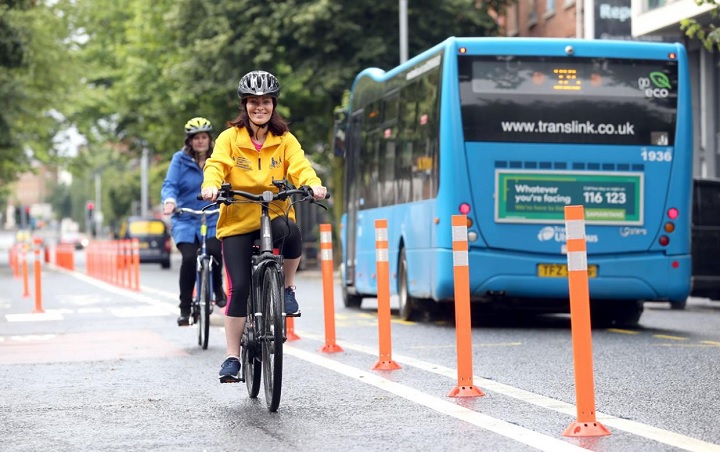
The Northern Irish Government has set out a ten year vision to develop the Belfast Cycling Network – as part of efforts to encourage people to make ‘environmentally responsible’ travel choices.
The network was first announced in 2021 and aims to give people the freedom and confidence to cycle, through the provision of ‘safe and attractive’ space.
This could be through segregated infrastructure, traffic-free paths or quiet streets where motor traffic volumes are very low and the speed of traffic is appropriate to the quiet nature of the area.
More than 50 individual schemes have been earmarked for delivery through the network, including trialling new routes. It is estimated the total project will cost £100 million over a ten year period.
Published earlier this month, the purpose of the delivery plan is to identify the key schemes throughout the city, with a particular focus on those areas where there is currently little separated or traffic-free infrastructure.
It also identifies those schemes that link pieces of isolated infrastructure into a more coherent network of routes.
The plan highlights those schemes that could be deliverable in the short term – the medium term – and the long term. It also sets out strategic approaches to delivery.
The timescale for delivery of each project will be refined as each project is designed, consulted upon and constructed.
Nichola Mallon, Northern Ireland’s infrastructure minister, said: “We need to provide access to safe, active and sustainable transport modes to encourage people to make environmentally responsible choices about travel.
“It is my ambition to significantly increase opportunities for active travel, to give everyone the freedom and confidence to be able to walk, wheel or cycle in our city safely.
“By creating a network of safe cycling infrastructure over the next ten years we can continue to make the city better for walking and wheeling, improve public transport while encouraging more people to consider cycling as a mode of transport and reduce the dominance of motor vehicles throughout the city.
“This is not, of course, a static plan. It needs to be dynamic, responding to changes in the needs of the people of this city. It should not be the limits of our ambition, but the framework within which our ambitions for active travel can grow.”
Comment on this story